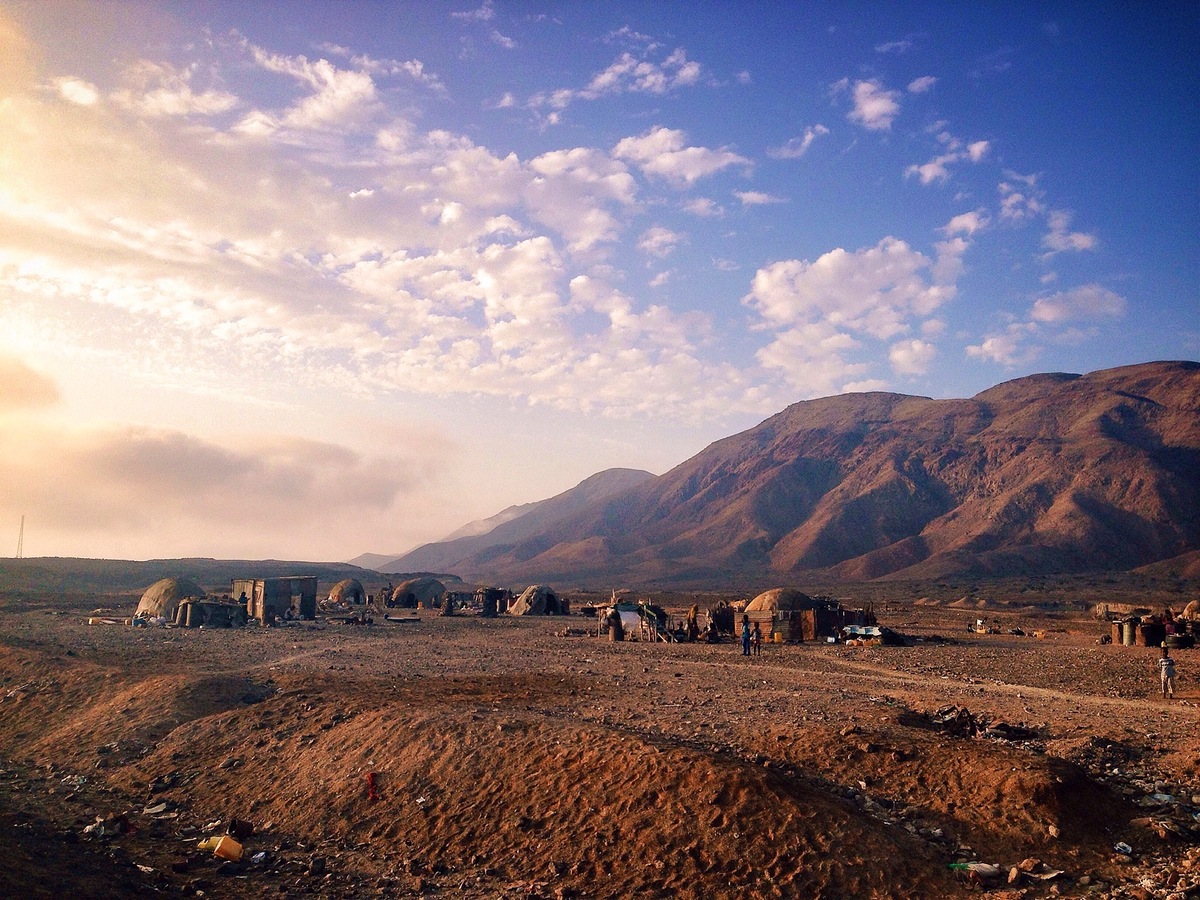
Djibouti
Africa’s horn, Djibouti
Often a forgotten land, Djibouti lies in the horn of Africa. Desert, ocean and history make for an unforgettable trip to Djibouti. Its uniqueness doesn’t just stem from its origins but from the peculiar landscape.

http://www.thekitchn.com/injera-ethiopias-traditional-bread-in-pictures-and-words-175992 – Image 01 (Injera)
Djibouti is the land where French and Arab influences crash into each other to create a melting pot of diversity of people. You can find restaurants all over Djibouti city offering European, Asian, African and Middle Eastern cuisine. Your first night should be spent at the L’Etoile de Kokeb offering Ethiopian food. The décor and daily dance show will transport you to an exotic land. Another firm Arabic favourite among locals is the Yemeni inspired Mukbassa Central – Chez Youssouf. Here you can find delicacies such as mokbassa (sweet pureed honey and fruit). For more authentic Djibouti cuisine try fah-fah (beef soup) and injera (flat bread also found in Ethiopia) from street vendors.

http://thinkbigadventures.com/africa/djibouti/index%204.html – Image 02 (Grand Barra)
Make a day trip to the Grand Barra, once an ancient lake. Now the cracked earth spans on forever and although it may not seem fascinating…It is an interesting view of years passed. There is also a smaller version called Petit Barra on the same road. Cracked by the sun, there is no life here. If you look out into the distance you may see the deceiving “fata morgana” – a mirage. Dress practically, as the plains are dusty and the wind tends to pick up sand ever so often.

https://za.pinterest.com/pin/121878733636934842/ – Image 03 (Ras Bir Lighthouse)
East of the centre of Djibouti City, lies the Ras Bir Lighthouse. It is an interesting landmark, unoccupied and no longer in use, it still stands tall. Djibouti is a major port of imports and exports for North and East Africa. Inactive since 1952, the French in recent years, installed radars to detect and monitor traffic. Another landmark in the city worth visiting is the African Quarter. A cramped area of tiny alleyways all intertwined, is where the city’s energy lies. It is atmospheric, bright and chaotic. You can also visit the Les Caisses Market to buy some clothing or jewellery.

https://www.emaze.com/@AOQCQIZW/djibouti – Image 04 (African Quarter)
While you’re shopping for clothing in the markets of Djibouti city, you may ponder about what the Djibouti wear. It is an eclectic mix of western wear, nomadic desert garments, loose robes and leather sandals. Djibouti men wear a macawiss (sarong) around their waists. Djibouti women wear shash (headwraps) and dirac (long loose fitting dress) or patterned tunics and wrap skirts. Nomadic Djibouti people wear a tobe (long white robe). On special occasions, Djibouti women adorn themselves with jewellery. Most clothing fabric in Djibouti is cotton due to the dry heat.

https://www.somalinet.com/forums/viewtopic.php?t=350023 – Image 05 (Djibouti women)
And if your trip is simply for the ecotourism, do visit the Abourma Rock Art site. You will need to start near Randa, at an Afar village called Giba Gebiley. Rent out a four-wheel drive and arrange for a guide to help you navigate the dusty less-maintained roads. Travel is around a day, you should camp overnight before making your way back to Djibouti city. Though the travel is less comfortable, you will be rewarded with views of spectacular hills, perfect boulders and engravings of the past.

https://www.lonelyplanet.com/djibouti – Image 06 (Abourma Rock Site)
Djibouti is a mesh of two worlds meeting. It’s the manifestation of a historical past and added to that is the untouched beauty of the landscape. As the sun sets on Djibouti and the heat starts to die down, you will appreciate the barren lands that the people have used build a country.
